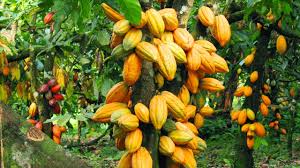
Government plans to secure 200,000 hectares for cocoa cultivation, but IMANI warns that land alone won’t solve the sector’s woes. Issues like ageing farmers, smuggling, and uncompetitive pricing still threaten viability.
Ghana’s Finance Minister recently announced government’s plans to secure 200,000 hectares of land to expand cocoa cultivation as part of efforts to restore production to 1 million metric tonnes.
The initiative seeks to reverse the sector’s recent decline. Ghana’s cocoa output has fallen largely due to ageing farms, diseases like Cocoa Swollen Shoot Virus, illegal mining (galamsey), and climate change. Expanding farmland seems like the most direct response with potential to increase production volumes and boost export revenues. However, Ghana’s cocoa problems run deeper than land availability. Without addressing systemic inefficiencies and disincentives in the value chain, more land could simply translate into more of the same struggles, low productivity, farmer poverty, and volatile revenues.
What Are the Real Constraints?
Ageing Farmers; IMANI’s recent analysis of cocoa farming models revealed that cocoa farming in Ghana is predominantly undertaken by older individuals. Specifically, 74% of respondents are above 45 years old; 37% are aged 45–54, 25% are aged 55–64, and 12% are aged 65 and above. In contrast, only 4% of cocoa farmers surveyed are under the age of 35, indicating minimal youth participation. Several factors account for this trend.
Younger people often view cocoa farming as physically demanding and financially unrewarding, especially in the face of challenges such as climate change, pest infestations, and disease outbreaks. Additionally, more attractive alternatives such as artisanal and small-scale mining (ASM), urban employment, and education lure youth away from rural areas.
The cocoa sector is not attractive to young people, partly because of the low returns and high production costs. Most cocoa farmers are smallholder farmers producing averagely about 457kg/ha. As a result, they are unable to benefit from periods of high prices. IMANI’s analysis of cocoa farming models revealed that at the mean production of about 457kg/ha, more than half of cocoa farmers will not be able to achieve a decent daily living income. Price Disincentives and Smuggling; Ghana’s fixed cocoa producer price is often lower than what farmers can earn across the border in Côte d’Ivoire or on the black market, leading to rampant smuggling.
Unless the pricing mechanism becomes more competitive, expanded production may only increase leakage. Also, cocoa-growing regions continue to face encroachment from illegal mining. Without stronger land rights enforcement and community-level protections, the new land risks being degraded or contested.
To address these, the report recommends a comprehensive set of interventions to make cocoa farming more viable, sustainable, and attractive. Promote Systems Agroforestry-Based Cocoa The government, in partnership with development agencies, should scale up the adoption of agroforestry models across cocoa growing regions.
While cocoa has traditionally thrived under forest canopies, widespread forest conversion, often due to limited knowledge and inadequate support, has led to unsustainable practices. Reviving initiatives like the Cocoa and Forest Initiative (CFI) and aligning with the National Implementation Plan will improve access to shaded trees and promote climate-resilient cocoa production. Public education and extension services must play a central role in changing farmer behavior and promoting long-term ecological benefits.
Strengthen CODAPEC and CRIP Coverage
The Cocoa Pest and Disease Control (CODAPEC) and Cocoa Rehabilitation and Intensification Programmes (CRIP) are critical for reducing farm losses and lowering operational costs. Expanding these programmes with subsidised inputs and mass spraying campaigns will help farmers manage their farms more efficiently and increase productivity, especially as cocoa trees age or become diseased.
Enhance Farmer Training and Extension Services Soil type, climate conditions, and farm management practices are closely linked to productivity. Yet, many farmers lack access to updated agronomic knowledge. Government agencies like COCOBOD must expand the scope of their training programmes to reach more farmers with relevant education on climate smart agriculture, environmental stewardship, and responsible input use. This will be particularly crucial in ensuring that productivity gains are sustainable and do not compromise ecological health. However, Ghana’s cocoa problems run deeper than land availability. Without addressing systemic inefficiencies and disincentives in the value chain, more land could simply translate into more of the same struggles, low productivity, farmer poverty, and volatile revenues.
The Article is under the title “Cocoa Reform: More Land, Same Problems?”
*IMANI Center for Policy & Education is a Think Tank of considerable local and international repute based in Ghana.






